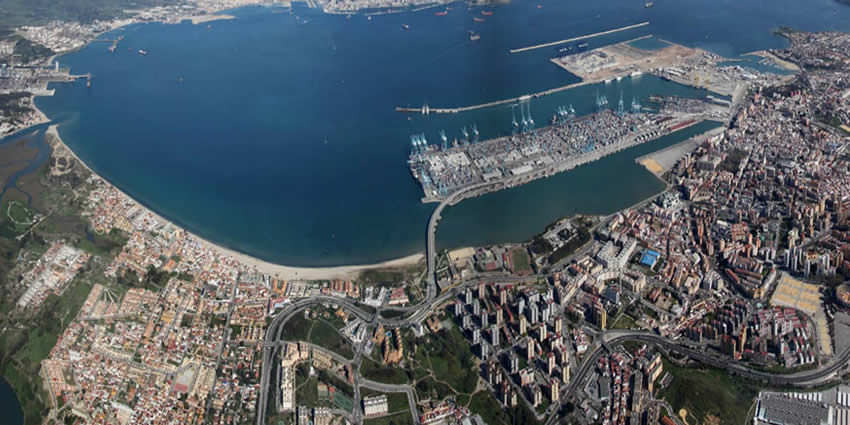
Lázaro Cárdenas
Lazaro Cardenas is a bustling port city located on the Pacific coast of Mexico, in the state of Michoacan. The city serves as a vital center for maritime trade due to its strategic location and well-equipped port facilities.
Situated on the coastal plain, Lazaro Cardenas is surrounded by the Pacific Ocean and rugged mountains. The city is characterized by the presence of industrial ports, which play a significant role in Mexico’s trade.
While the center of Lazaro Cardenas is characterized by bustling port activity and modern developments, visitors can also explore pristine beaches and nearby nature reserves, offering a glimpse of Mexico’s rich biodiversity.
When the city was called Los Llanitos, it was part of the municipality of Arteaga. In 1932, it was granted city status and named after the politician Melchor Ocampo. In 1970, the name was changed again to Lázaro Cárdenas.
Climate and Weather
Lázaro Cárdenas experiences a tropical savanna climate, with warm to hot temperatures.
The average temperature ranges from 24°C to 30°C. The rainy season typically spans from June to October, with precipitation peaking in July and August. Be prepared for high humidity levels, particularly during the wet season.
Best Time to Visit
The ideal time to visit Lázaro Cárdenas is during the dry season (from November to May) when the weather is more predictable, with lower chances of rainfall, making it ideal for beach outings, sightseeing, and outdoor adventures.
This time is also the peak tourist season, so may be busier and more expensive.
For those seeking a quieter experience, visiting Lazaro Cardenas during the shoulder seasons of November to December or April to May can offer a good balance of favorable weather and fewer crowds. And less expensive.
History & Timeline
In 1446, the province of Zacatula was a disputed region between the Purépecha and Mexica empires due to its mineral wealth and agricultural productivity. After the arrival of the Spaniards, this area became very desirable.
Hernán Cortés, learning of his wealth, sent Gonzalo de Umbria and a small party to explore the gold mines in Zacatula’s domain, which resulted in the return of the gold and two local leaders offering services to the Spanish crown.
Cortés subsequently commissioned Captain Juan Alvarez Chico to erect crosses along the route to Zacatula, which would signify Spanish possession of the coastal region.
In 1523, Juan Rodríguez de Villafuerte and Jimón Cuenca founded the “Villa de Concepción de Zacatula”, where, by order of Cortés, the first shipyard in Mexican lands was built in Barra de Zacatula.
This establishment became a key trading and maritime center, serving both for exploration of Mar del Sur and as a starting point for expeditions along the coast.
With Spanish colonization came the encomienda system, aimed at subjugating the indigenous population to labor and exploitation of the land. At the same time, Augustinian missionaries led by Fray Juan Bautista Moya established missions throughout the region, moving from Ajuchitlan to Acapulco.
In 1533, the Spanish crown founded Corregimientos and Alcaldías Mayores, and Zacatula became an important administrative center. However, overexploitation of resources, combined with disease and forced labor, led to a decline in the indigenous population, replaced by African slaves commissioned by the Spanish monarchs.
By 1567, the area around the mouth of the Balsas River became known as “La Orilla”. In 1797, Manuel Antonio Otero purchased the Hacienda La Orilla, significantly expanding its territory by the end of the 19th century.
A conflict over jurisdiction arose, resolved in 1901 by President Porfirio Díaz, who established the Balsas River as the boundary between Michoacán and Guerrero.
In 1906, the hacienda was sold to the Compañía de La Orilla, which began large-scale agriculture and livestock raising, attracting workers mainly from the Guerrero coast. The Mexican Revolution briefly interrupted the activities of the hacienda.
From 1928 to 1932, President Lázaro Cardenas attempted to pacify the region and grant land rights to local communities. Cárdenas signed a decree redistributing land from the La Orilla estate, culminating in its sale in 1937.
How to get there & Transportation
The city is served by the Lázaro Cárdenas Airport.
The port of Lázaro Cárdenas has both public and private terminals.
Let us know if this article was useful for you